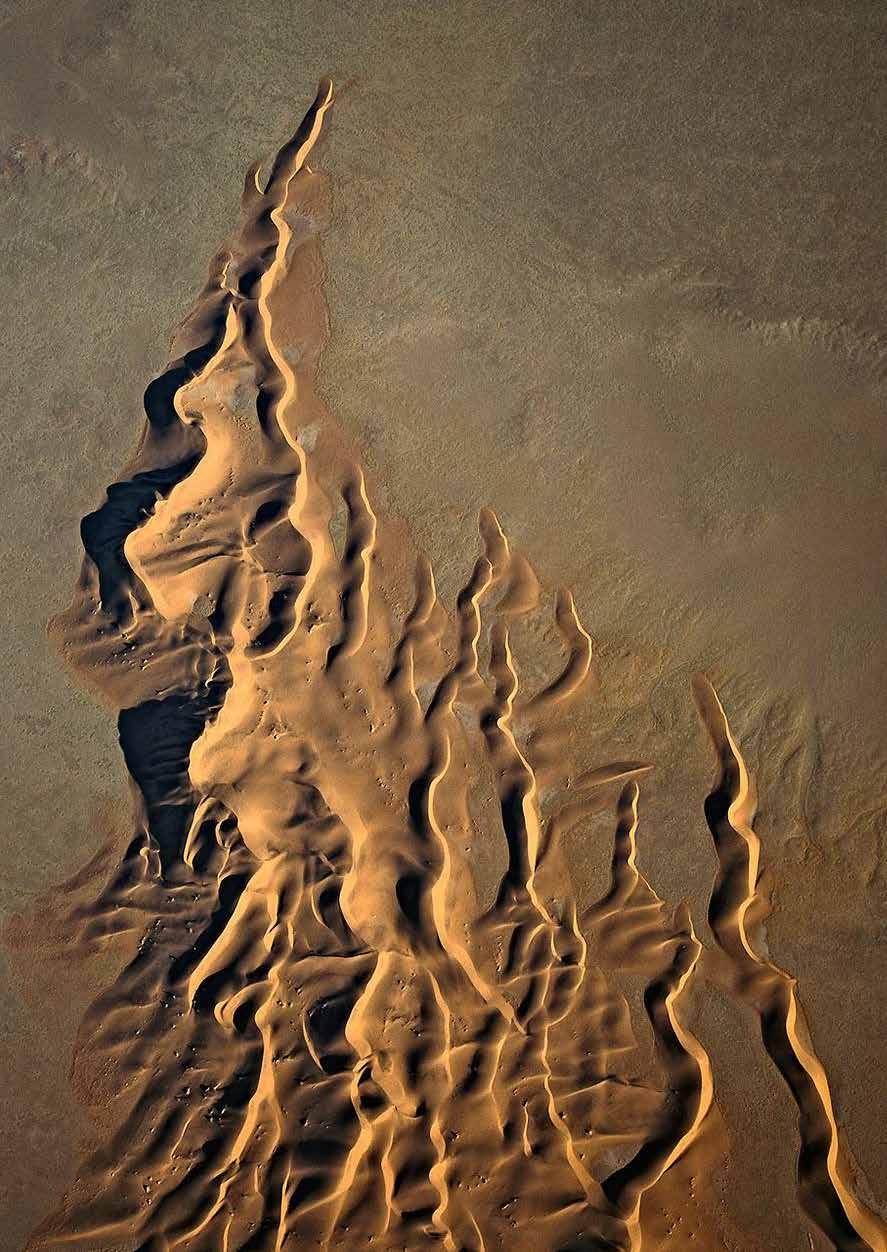
6 minute read
PHYGITAL BIOSPHERES
from PHYGITAL BIOSPHERES
by Zain Ansari
The development of deserts is impacted by three physiological factors (Schwimmer and Haim, 2009):
A- Rain Shadow: Separation from oceanic moisture due to the massive range of mountains. B- Lack of Storm Systems: Storms create unstable environments that help to create favourable conditions of moisture necessary for precipitation. C- High-Pressure Belts: Persistence of dry stable air masses which resist convective currents.
Advertisement
Due to these factors, the deserts are classified into three categories (Schwimmer and Haim, 2009):
A- Rain Shadow Deserts
B- Sub-tropical Deserts
C- Coastal Deserts
Temperature and moisture availability are key environmental stressors in xeric urban environments (Schwimmer and Haim, 2009). Therefore, built environments in desert regions must be addressed through an integrated physiological approach that can dissipate heat and conserve water. In order to achieve this, the research focuses on the three primary stressors as design parameters to propose a responsive architectural methodology.
Thermal barrier
Explore geometries and textural properties to control thermal activities in buildings.
Aerodynamics
Develop aerodynamic strategies that can redirect and channel wind through building envelopes.
Moisture regulation
To create an interactive material interface that can help to capture atmospheric dew and allow retention and redistribution of moisture in architectural skins.
FROM NATURE TO ARCHITECTURE
Desert environments are sensitive ecosystems where the survival of natural life is heavily dependent on three key environmental factors: air, temperature and water. As the research aims to take these factors as design parameters, it is crucial to learn from various organisms how they develop resilient coping mechanisms in such environments. For this purpose, two case studies are analysed, the desert beetle and cactus.
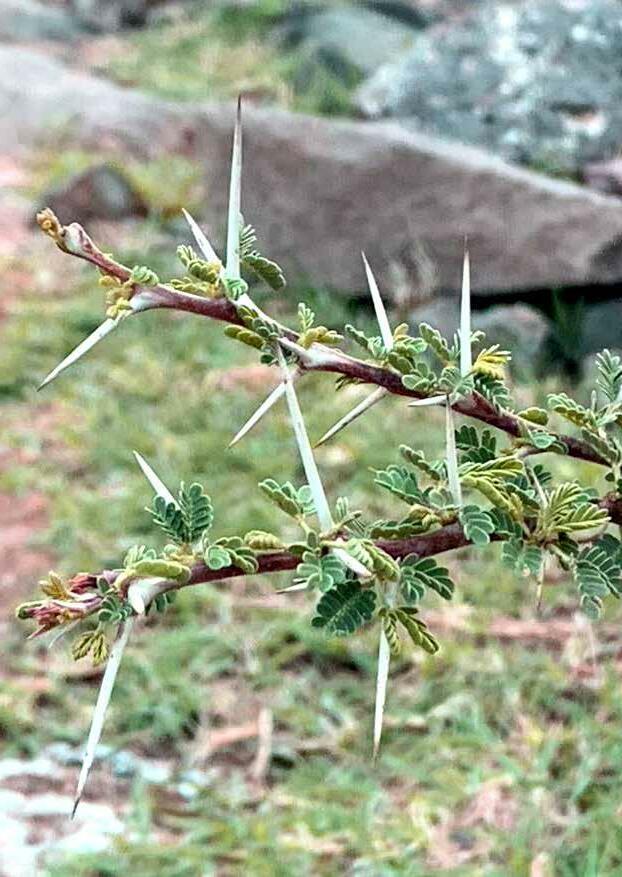
DESERT BEETLE
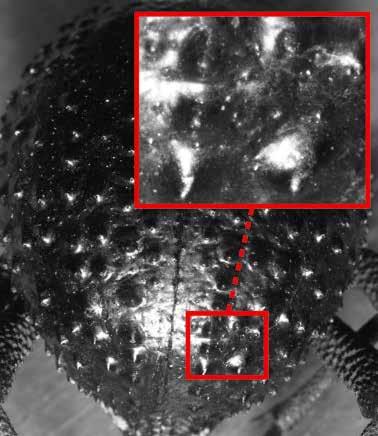
2.4 (Nørgaard & Dacke, 2010)
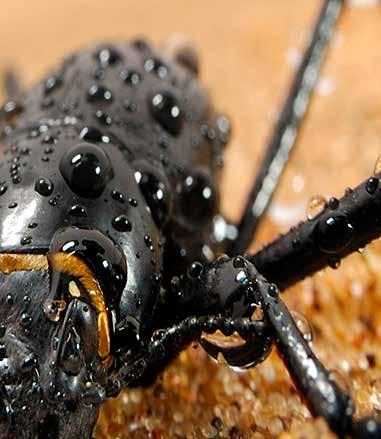
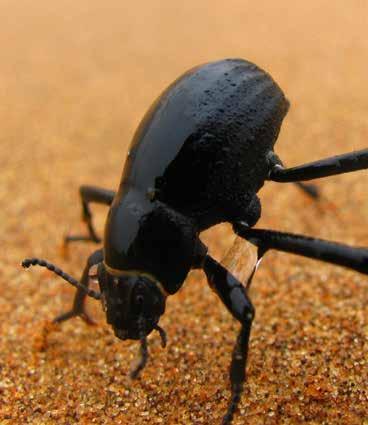
DESERT BEETLE BUMP TEXTURE
During the night, the beetle tilts its body, at an angle, towards the wind, allowing it to harvest atmospheric dew (Guadarrama-Cetina et al., 2014). The shell of the desert beetle is a multi-layered performative interface comprised of two primary microstructures that allow hydrophobic and hydrophilic functions simultaneously (GuadarramaCetina et al., 2014). The bumps allow the deposition of dew drops in the valleys, and after collection, it trickles down to the mouth of the beetle (Guadarrama-Cetina et al., 2014).
2.5 (Nørgaard & Dacke, 2010) 2.6 (Nørgaard & Dacke, 2010) 2.7 (Nørgaard & Dacke, 2010)
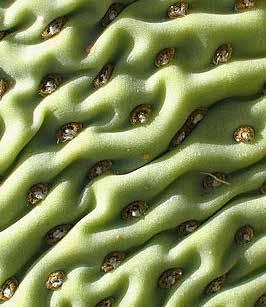
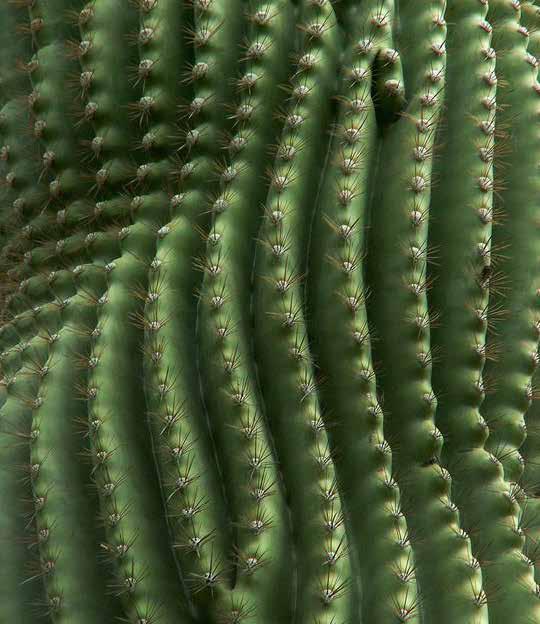
2.8 (India and Magnus, 2017)
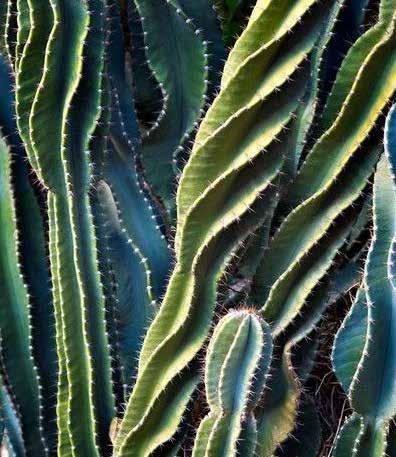

CACTUS
PLEATED SURFACE AND SPINES
Cactus is defined by the protuberances and ribbed structures that play a vital role in air circulation and water retention in severe heat (Courtney, no date). These pleated surfaces increase the volume of moisture absorption through stretching and retracting mechanisms while reducing direct exposure to sunlight (Courtney, no date).
It can be observed that surface textures and their operation on multiple scales induce microclimates to play a vital role in establishing a performative interface for the survival of these two desert organisms. In contrast, the current approaches to designing buildings in desert urban contexts ignore such environmental parameters and rely heavily on mechanical cooling.
2.9 (India and Magnus, 2017) 2.10 (India and Magnus, 2017) 2.11 (India and Magnus, 2017)
ARID VERNACULAR
For the last 10,000 years, unbaked earth has been one of the vital building materials used in different arid regions worldwide (Jean Dethier, 1982). Unbaked earth has been used to achieve various architectural forms defining the cultural identity of the building communities (Jean Dethier, 1982). Due to its thermoregulatory properties, unbaked earth construction has proven to be highly energy-efficient and adaptable to various arid climates (Jean Dethier, 1982). Apart from materiality, the desert vernacular was also highly dependent on strategic planning, where spatial voids played a significant role in moderating microclimates in architecture (Babsail and Al-Qawasmi, 2015). Therefore, it can be observed that the material’s versatility, when paired with strategic planning, helped desert communities establish an ecological harmony between the natural and built environments.
Desert urban environments have lost their traditional identities and have become hybrids of exotic characters in their architectural form, spatial arrangements and construction techniques (Babsail and Al-Qawasmi, 2015). Today, the abandonment of local traditions and importation of alien materials are pushing urban desert settings to face significant energy consumption challenges required to cool buildings (Babsail and Al-Qawasmi, 2015). So how can we use advanced computation and fabrication technologies to understand the past and predict a culturally and environmentally responsive built environment for the future?
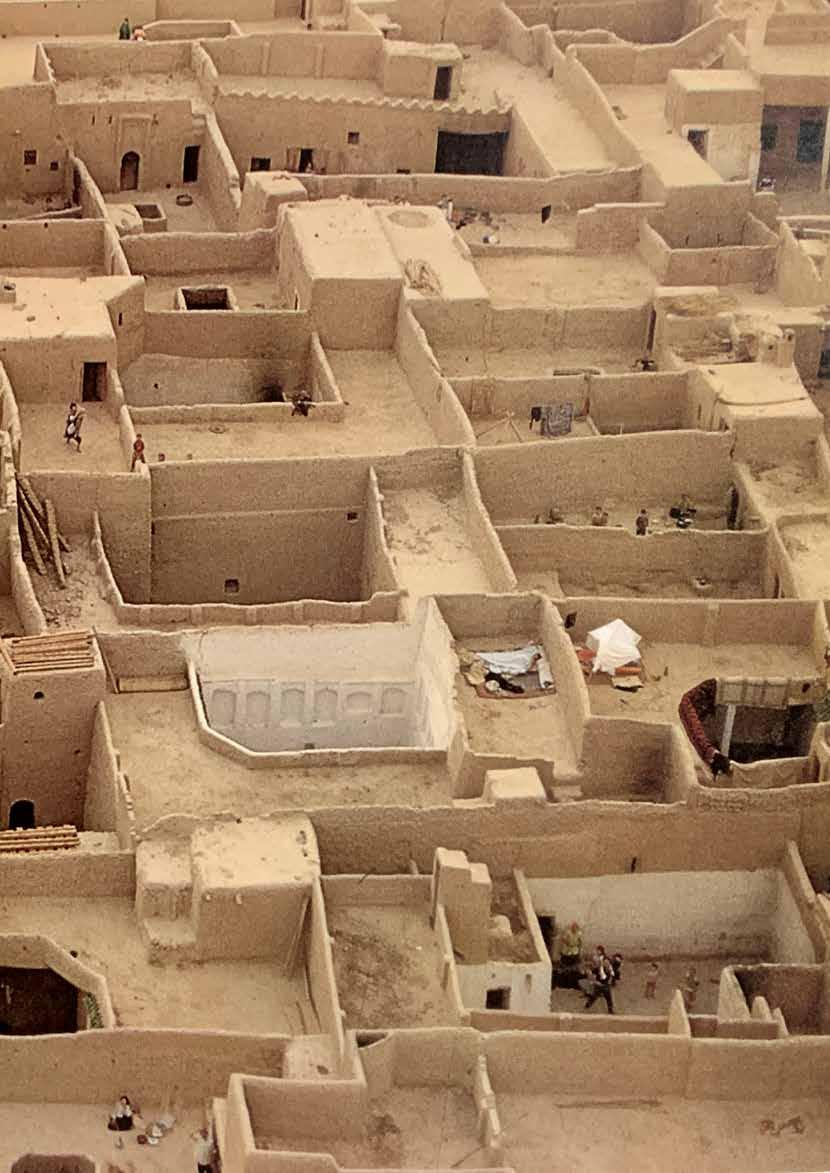
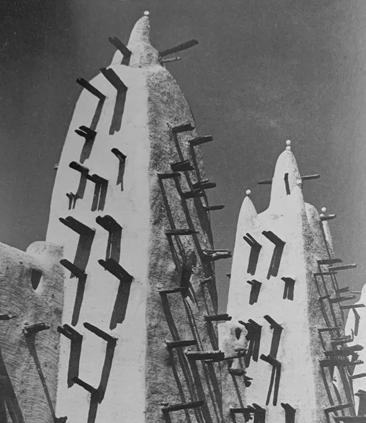
2.13 Jean Dethier, 1982
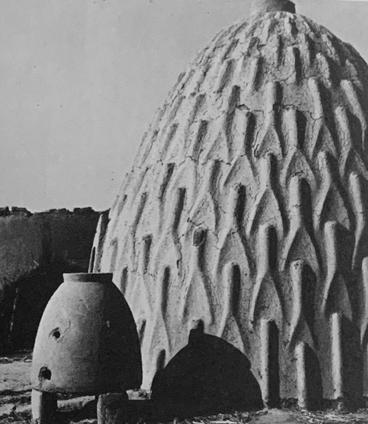
2.15 Jean Dethier, 1982 2.14 Jean Dethier, 1982
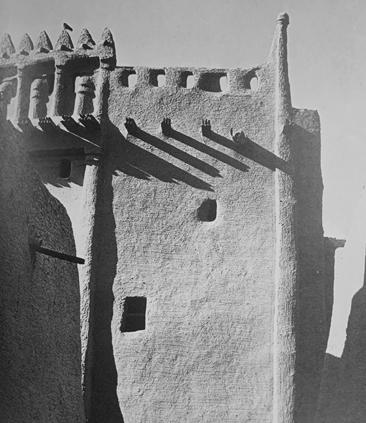
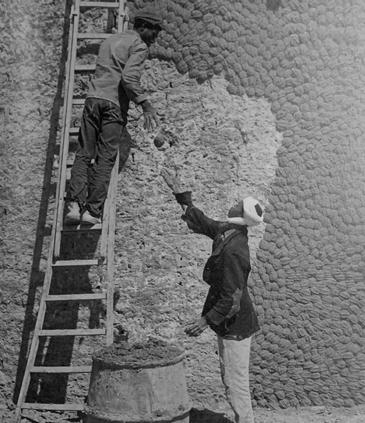
2.16 Jean Dethier, 1982 2.17 Jean Dethier, 1982
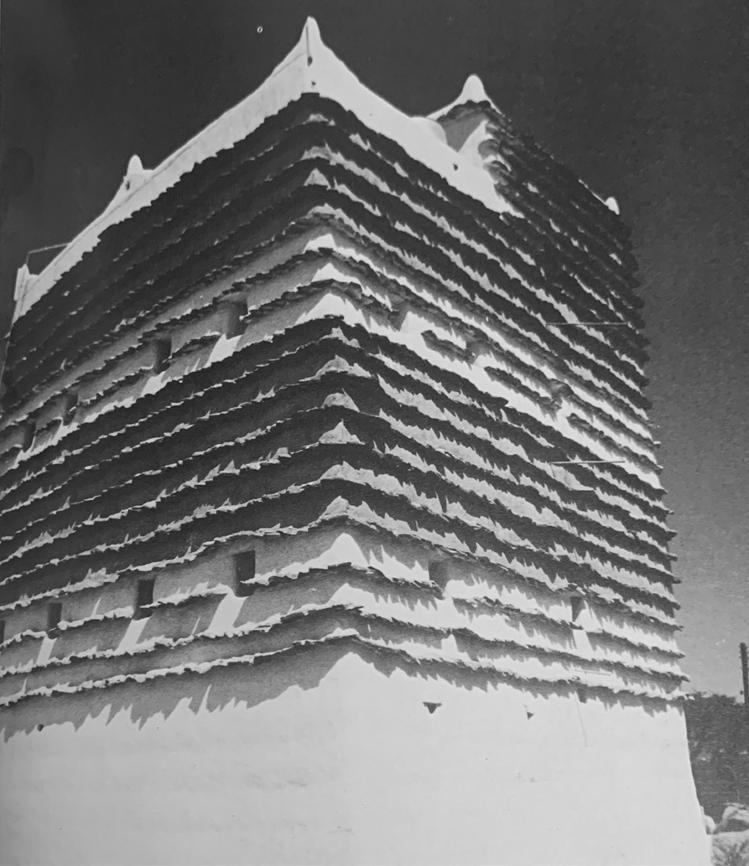
The research focuses on developing and integrating a feedback loop between architecture’s digital and physical domains to develop a performative architectural interface for xeric environments. This is achieved by quantifying key parameters to produce a database of results through digital simulations and material experiments integrated seamlessly into the architectural design process.
THERMAL PERFORMANCE
About 50% of the energy consumption in desert buildings is subjected to air-conditioning, resulting in heavy reliance on conventional fossil fuels (el Azhary et al., 2018). The lag time vs. thermal differences is considered to calculate the loss and gain of heat in architectural skins to optimize the thermal performance in buildings.
Air movement in desert environments is an essential factor that allows passive cooling in the desert vernacular and enables a gaseous exchange (Alp, 1990). This thermal and gaseous exchange can enable buildings with a dynamic interface when orchestrated on different scales. Factors such as wind speed and surface protuberance size are considered to understand the circulation of air on different scales.
Water availability is crucial for organisms’ survival in desert environments (Beysens et al., 2013). Where architectural skin act as a virtual interface between the built and hot, humid air (Beysens et al., 2013). If addressed strategically, architectural skins can be utilized to harvest atmospheric moisture due to thermal differences between the two mediums (Beysens et al., 2013). Collecting dew on facades can help increase the moisture levels in the architectural skins, providing two benefits: passive cooling and survival of plants. Therefore, the surface texture is considered a design parameter to develop an interface for dew capture on architectural skins.
AERODYNAMICS
DEW CAPTURE



As the research aims to induce microclimates using thermal performance, aerodynamics and dew capture, scale becomes an essential factor while approaching the design process. Three integral operational scales in the built environment are addressed while orchestrating the design parameters to develop a performative architectural interface for xeric environments.
MACRO: URBAN SCALE
Using environmental simulations such as solar and wind analysis to optimize the foundations of urban planning
Solar radiation and wind analysis are used to map openings and protuberances that allow good light penetration and wind circulation.
Using thermal mass analysis to map bump textures in architectural modules allows atmospheric dew deposition on architectural skin.
MESO: ARCHITECTURAL SKINS
MICRO: SURFACE TEXTURES







